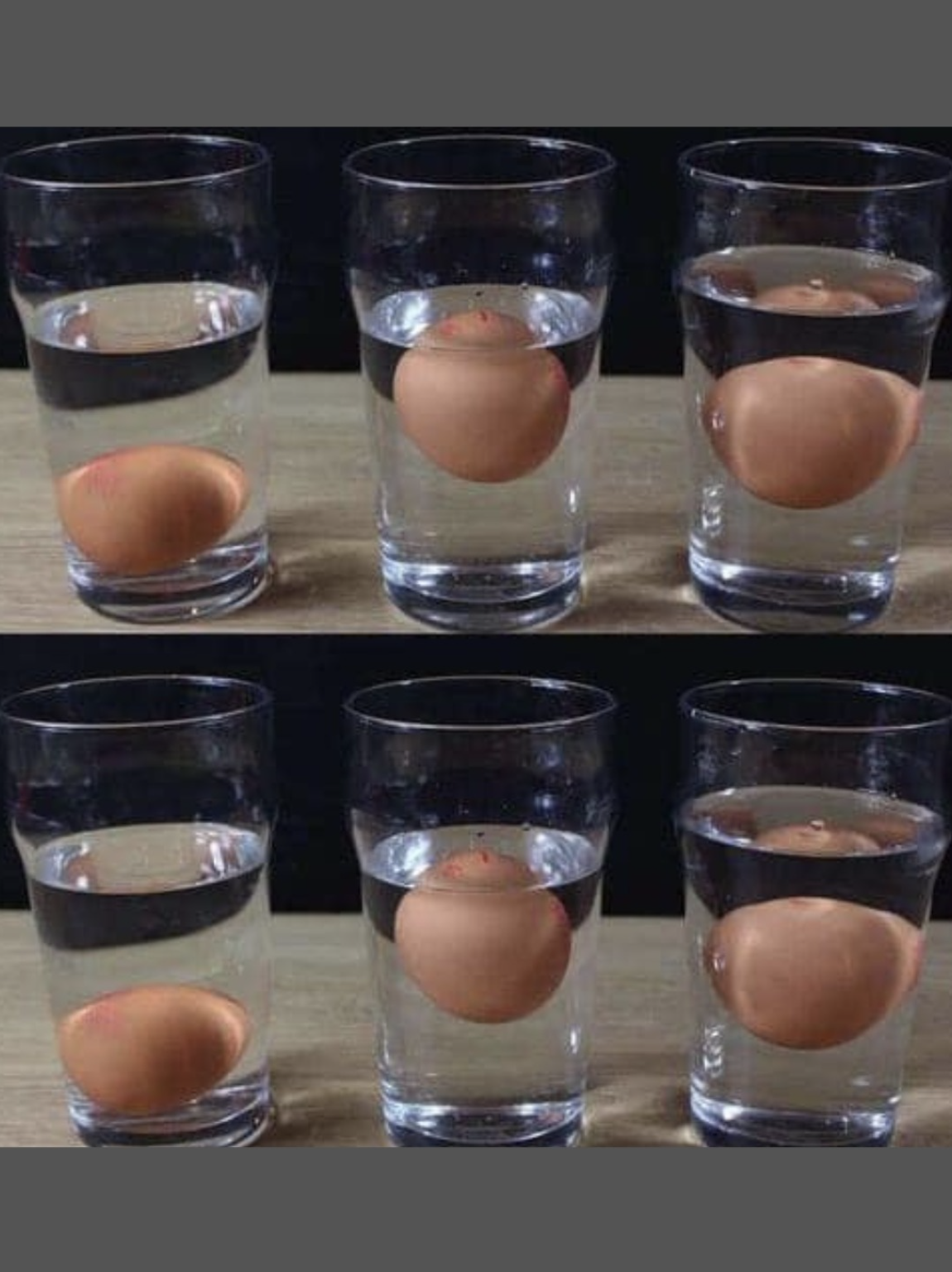How to do it:
Fill a bowl with cold water
Gently place the egg in the water
Watch what happens
What it means:
Sinks & lies flat
🟢
Fresh
— less than a week old
Sinks but stands upright
🟡
Good, but aging
— 1–3 weeks old (still safe!)
Floats to the top
🔴
Bad
— air pocket is too big, bacteria may be present
✅ Why it works:
As eggs age, moisture escapes and the air cell inside grows. The bigger the air pocket, the more buoyant the egg.
Float = toss.
No exceptions.
2. 👃 The Sniff Test – When You’re Ready to Commit
How to do it:
Crack the egg into a separate bowl (not into your pancake batter!)
Lean in and take a quick sniff
What it means:
No smell? 🟢 Perfect. Fresh eggs are nearly odorless.
Rotten, sulfurous, eggy-fart smell? 🔴 Trash it. That’s hydrogen sulfide — a sign of bacterial breakdown.
⚠️ Pro Tip:
Don’t over-sniff. One whiff is enough.
If your eyes water, you already know the answer.
3. 👂 The Shake Test – For the Curious (But Not Reliable)
How to do it:
Hold the egg up to your ear and gently shake it like a tiny maraca.
What people say:
Silent? Fresh
Sloshy? Bad
The truth?
This test isn’t reliable.
Even fresh eggs can “slosh” slightly — the yolk moves, the white shifts.
Only trust this if the egg also floats or smells bad.
🚫 Bottom line:
Don’t rely on shaking alone.
Use it as a clue — not a verdict.
4. 📅 The Date Check – Helpful, But Not Gospel
You see:
“Sell-By”
“Best By”
“Use By”
But here’s the secret:
Eggs last way longer than the carton says.
When stored properly (in the fridge, in the carton, not in the door), eggs can stay fresh for:
3–5 weeks past the sell-by date
Sometimes up to 50 days
✅ So don’t toss eggs just because the date passed.
Test them instead.
5. 🔍 The Shell Inspection – Be a Food Detective
Before you crack it, look at the shell.
Toss it if you see:
Cracks → Bacteria can enter
Slimy or sticky texture → Sign of bacterial growth
Powdery spots → Mold
Odd discoloration → Unusual pink, green, or black hues mean contamination
✅ A good egg shell should be:
Dry
Clean
Hard
Slightly chalky
If the outside looks sketchy…
The inside probably is too.
🍳 Bonus: The Crack Test (For When You’re Cooking)
Even if the egg passes all tests, check it after cracking.
Fresh egg:
Yolk is round, firm, and high
Egg white is thick and clumped around the yolk (the “chalazae” strings are normal!)
Old (but still safe) egg:
Yolk is flattened
White is runny and spreads out fast
Bad egg:
Discolored yolk (pink, green, black)
Foul smell
Bubbly or frothy appearance
🛑 If you see any of these — don’t cook it.
Throw it out, clean the bowl, and open a window.
🧠 Final Thoughts: Don’t Fear the Egg — Test It
We treat eggs like ticking time bombs.
We panic over dates.
We avoid using the last one in the carton.
But eggs are incredibly resilient — when stored right.
So next time you’re staring into the fridge, holding an egg like it might betray you…
Don’t guess.
Don’t pray.
Test it.
Use the float test.
Trust the sniff.
Respect the shell.
Because sometimes, the difference between “I can’t eat this” and “I’m making an omelet”…
Isn’t in the date.
It’s in the water.
And once you master these tricks?
You’ll never fear the back of your fridge again.
